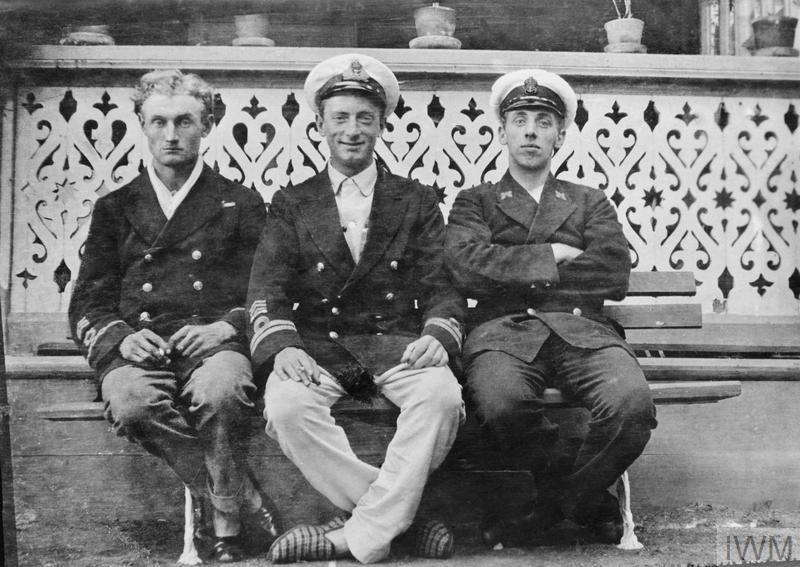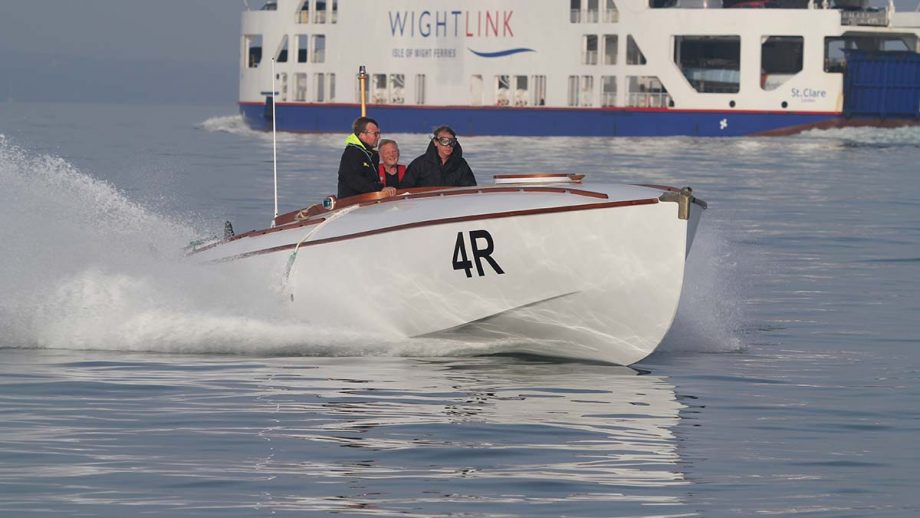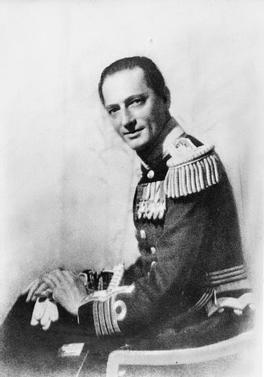Augustus Agar VC DSO
Augustus Agar had a remarkable Naval career by any standards. He saw action at Gallipoli, North Russia and Zeebrugge in the First World War and the Indian Ocean in the Second. He trained as a pilot but did not gain his wings. His superiors at that time thought he was hugely talented but a little unreliable.
At Zeebrugge and Ostende, Agar and his CMBs had been primarily used to lay smoke screens. At the end of the War, they became involved in an extraordinary Secret Service mission to extract a British spy from the Eastern Baltic, where the Royal Navy was tasked with keeping the sea lanes to Finland and the newly independent Baltic States free from Bolshevik control (nothing changes, then…). They were painted white, given a cover story of being salesmen trying to market fast boats to rich clients, and based at a fancy club at Terioki, in Finland. They had uniforms onboard in case they were captured as spies. Fortuitously, Agar had arranged for a couple of torpedoes to be included in the support shipping.

The Kronstadt raid
To support the wider Navy effort and largely on his own initiative, on 16 June 1919 Agar led two CMBs to attack the Bolshevik fleet anchored at Kronstadt. One boat, CMB7 hit a possible floating mine, was damaged and had to be towed back to harbour. The following night Agar set out alone in CMB4 in worsening weather. Apart from the floating mines, any breakdown courted capture and almost certain death: the enemy had already executed their own officers.
There was a heavy sea running and it was hard to see. CMB4 penetrated the destroyer screen but had technical issues with the torpedo firing charge. Coolly, Agar stopped to carry out effect repairs in full view of the enemy. Twenty minutes later they were underway again and, still undetected, approached the cruiser Oleg, lying at anchor. There was a destroyer anchored close by, but at 800 yards Agar fired his torpedo, turned to starboard (these things did not turn easily to port!) and accelerated away. The torpedo hit just aft the foremost funnel and she caught fire at one. In the meantime, Agar’s cover was blown and the CMB came under heavy fire. Amazingly they got back to Terioki unscathed. He was awarded the Victoria Cross.
Back for more…
On 18 August, he returned to Kronstadt, leading six newly delivered CMBs through the minefields and under the forts. The attack, pressed home by Commander Claude Dobson in a 55’ CMB, damaged two dreadnought battleships and sank a submarine deport ship. Agar was awarded the DSO. Dobson and Charles Steel, driving another 55 footer, won the Victoria Cross. Agar’s original helmsman Russell McBean, now driving CMB31 was awarded the DSO.

The spy, Paul Dukes, known as ‘the Man with a Hundred Faces’ eventually reached London overland and was knighted by the king.
Amazingly, CMB 4 has survived and can be seen today at Boathouse No 4 in the Portsmouth Historic Quarter.
CMB4R – the replica
In 2016, with funding from the Chancellor’s LIBOR fund, a plan hatched by Rodney Agar (Augustus’ nephew) to construct a working replica of CMB 4 got underway in Portsmouth Historic Dockyard. Built with traditional techniques and some modern touches to help preserve her for the future, CMB4R was launched in 2023. She is now part of the Historic Military Powerboat Collection run by the Portsmouth Historic Quarter. She can be seen at Boathouse No 4.

CMB 4R on sea trials at 39 knots
At the start of the second world war, Agar was commanding the cruiser Emerald in the north Atlantic, shipping gold bullion from the Bank of England to Canada for safe keeping and escorting convoys. In November 1940 Augustus Agar was appointed Chief of Staff to Rear Admiral Coastal Forces and was central to the establishment of the new capability, first at Portland and then at HMS Hornet. This was no mean feat – 90% of the personnel were civilian volunteers drawn from the rapidly expanding RNVR. Agar was closely involved with the trials and development efforts to develop the MGB/MTB capability to defeat the faster, more seaworthy and better-armed German E boats.
HMS Dorsetshire
He left Hornet in July 1941 to command HMS DORSETSHIRE, escorting convoys in the Indian Ocean and sinking a German submarine supply ship in the Atlantic. Dorsetshire was sunk by the Japanese in the aftermath of the fall of Singapore. During the 30 hours the survivors were in the water awaiting rescue, he organized distribution of food, tinned milk and water available in the rafts and few boats ‘and by his cheerfulness and optimism encouraged men to hold out who would otherwise have collapsed’. He was mentioned in Dispatches for this incident.
Mercurial, inspirational and driven by the highest ideals, Augustus Agar was a remarkable man by any standards. He thrived in action, led from the front and laid much of the foundations for the success of Coastal Forces in WWII. Driving a desk would not have been his thing!

